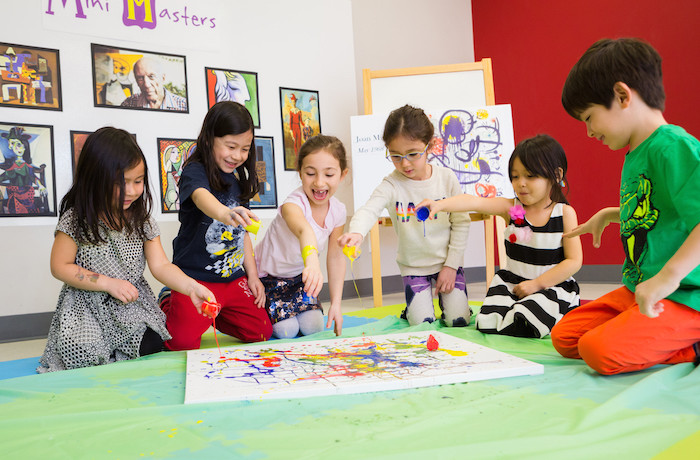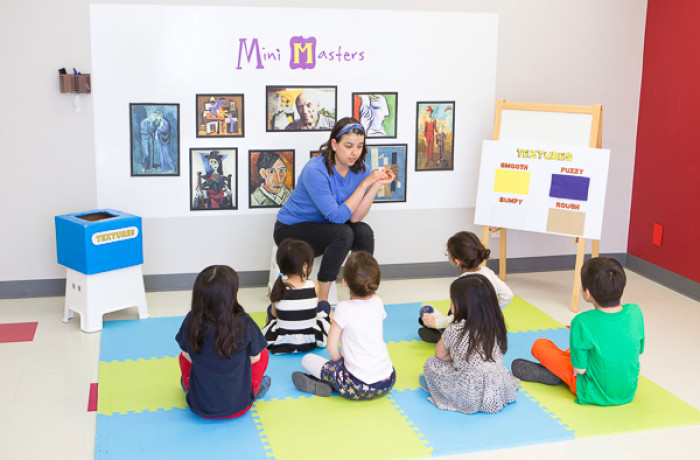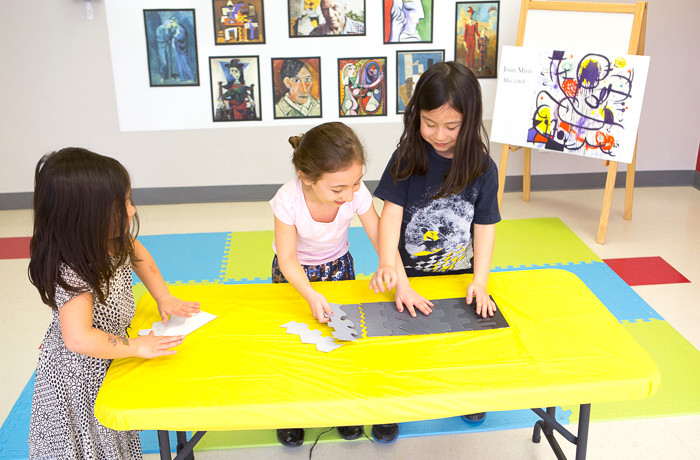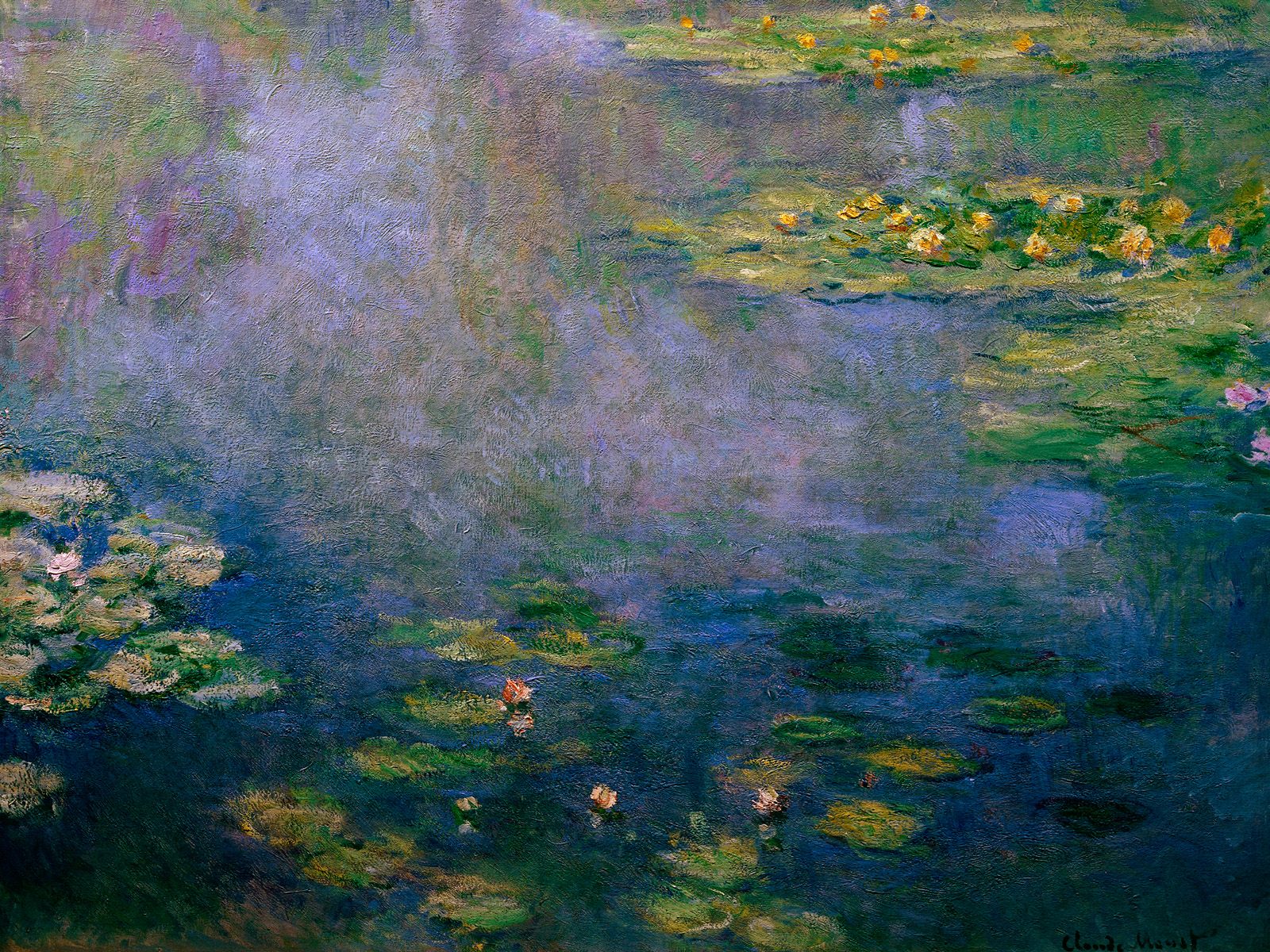- Home
- For Educators: The Alpha-Mania Program
- Mini Masters Program
Mini Masters Program
Mini Masters is an interactive visual arts program in which children aged 3 to 5 are introduced to the minds and techniques of great artists, including Pablo Picasso, Claude Monet, Henri Matisse, and Georgia O’Keeffe, to name a few.
Mini Masters builds independence, imagination, and creative confidence through manipulation and experimentation with a variety of materials and media.
The Mini Masters program:
- was developed by a team of certified educators with extensive knowledge of visual arts concepts and art history.
- focuses on 20 of the world’s great artists that encompass a range of artistic styles and techniques.
- allows children to explore the different movements in art history and the theoretical elements of design: line, shape, color, texture, value, space and form.
- provides children with new ways to express themselves by creating in the same style of a featured artist, including sculpting, still life drawing, collage, mural work, action painting, stain painting, etc.
- is planned carefully to allow for easy implementation, which reduces stress for educators.
- is regularly revised and updated.
License Details
A Mini Masters license enriches your classroom and brings dynamic cultural activities to your students.
Every Mini Masters licensee will receive:
- 100 distinct lesson plans related to 20 of the world’s great artists in a variety of artistic styles.
- hands-on activities that allow children to explore the elements of design
- a comprehensive instructor’s manual.
- digitized supplies unique to the program.
- all future revisions.
- ongoing training and support.

The Benefits of Licensing Mini Masters
What can I expect from the Mini Masters program?
- By studying the world’s great artists, children will develop cultural awareness and appreciation.
- Children will expand their artistic vocabulary and skill.
- Children will learn to celebrate their own successes as well as those of their peers through gallery shows.
- Parents will be able to share in their child’s love of the arts and have the opportunity to refresh their art knowledge by helping their kids consolidate what they learned in class.
The Artists
Mini Masters explores many influential and inspirational artists. These include:
- Claude Monet
- Pablo Picasso
- Vincent Van Gogh
- Henri Matisse
- Georgia O’Keeffe
- Joan Miro
- Keith Haring
- Paul Klee
- Andy Goldsworthy
- Sheila Hicks
- Kenojuak Ashevak
- Viola Frey

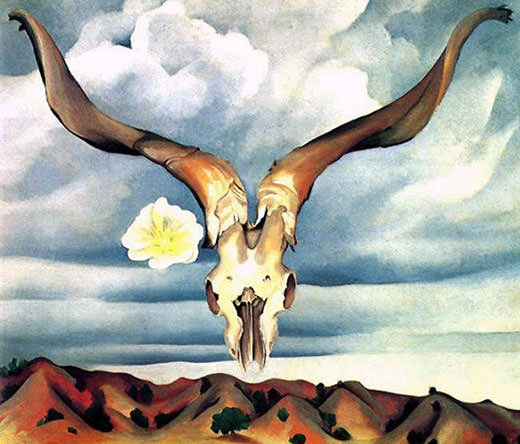
Featured artists are selected to:
- Represent particular eras and styles
- Renaissance Art
- Contemporary Art
- Surrealism
- Cubism, etc.
- Represent different cultures and populations
- Women’s Art
- Aboriginal Art
- Artists from around the world
- Showcase different forms of art
- Natural art
- Fiber art
- Sculpture, etc.
Why Teach Children about Art?
Most people can appreciate the idea that it’s important to teach art simply for the sake of art – the pure enjoyment of getting your hands dirty and creating something. Yet there are countless other reasons why teaching art is so important.
Here are a few:
Social and Emotional Benefits
- Art helps children to make sense of the world around them and to learn about other cultures and experiences to which they may not otherwise be exposed.
- Creating art helps children develop problem solving skills.
- Art teaches children how to make value judgments and how to discern what is important in their lives.
- Art strengthens children’s powers of observation.
- Art allows children to give form and shape to their ideas and feelings.
- By creating art, children develop aesthetic understanding, coordination, concentration, and self-esteem.
Cross-Curricular Connections
- Math- Art teaches children about shapes, size, and pattern recognition.
- History – Studying artists provides information about the historical context of art, while looking at art can give us clues about our history.
- Geography – Studying artists from around the world provides children with information about other countries and places.
- Social Studies – Art teaches children about different cultural perspectives and ways of life.
- Language – Learning new art terms strengthens a child’s vocabulary.
Artistic Skills and Techniques
- Children can learn practical skills in drawing, painting, sculpting, weaving, woodworking, etc.
- Children learn about elements of design and composition.
- Children will understand better the principles of colour and colour mixing.
- Children gain knowledge of a variety of art techniques.
Contact Us
To learn more about the Mini Masters program and Alpha-Mania, contact us today!
Contact us today!
References
Bailer, K. (2007). Developmental stages of art. Retrieved April 2/2010, from http://k-play.com/pdf/Developmental%20Stages%20of%20Art.pdf
Beal, N. (2001). The art of teaching art to children: In school and at home. New York: Farrar, Straus and Giroux.
Booth, D., & Hachiya, M. (2004). The arts go to school. Markham, ON: Pembroke.
Eisner, E. (2002). The arts and the creation of mind. Yale University Press.
Ontario Ministry of Education, (1998). The arts: The Ontario curriculum grades 1-8. Toronto: Queen’s Printer for Ontario.
Shipley, D. (1998). Empowering children: Play-based curriculum for lifelong learning. Scarborough, ON: Nelson.

